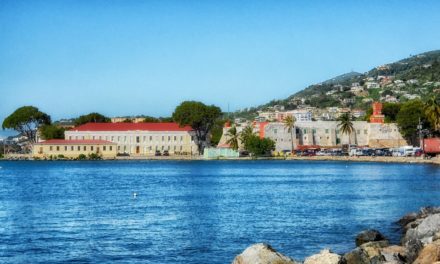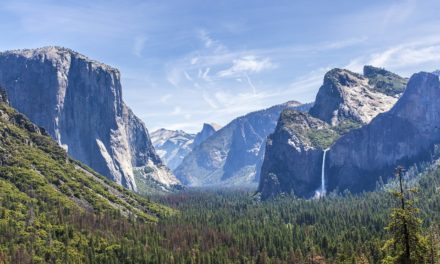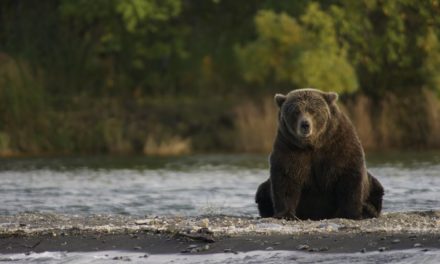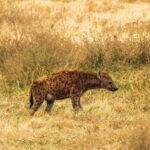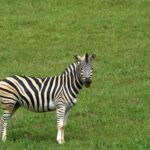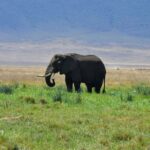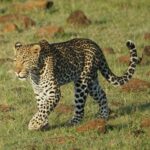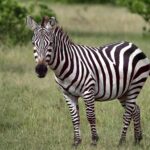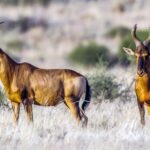Table of Contents
Overview / About the Park
Black Canyon of the Gunnison National Park lies in western Colorado, carved by the powerful Gunnison River over millions of years.
The canyon is named for its dark, steep walls that see little sunlight, parts of it only get 33 minutes of direct sun each day.
Sheer cliffs rise over 2,700 feet, making it one of North America’s steepest canyons.
It’s smaller than the Grand Canyon but feels far more intimate, wild, quiet, and awe-inspiring.
Wildlife & Nature
The park’s varied terrain supports mule deer, elk, black bears, and golden eagles.
Look closely and you might spot peregrine falcons nesting on cliff ledges.
Juniper and piñon pine forests cover the rim, while the canyon floor shelters cottonwoods and willows.
The Gunnison River cuts through ancient rock formations, some over 1.7 billion years old, exposing one of the oldest geologic records in North America.
Experiences & Activities
- Scenic Drives: Both the South Rim Drive and North Rim Road feature overlooks like Painted Wall View and Pulpit Rock, each offering jaw-dropping perspectives of the canyon’s depth.
- Hiking: Trails range from easy rim walks to strenuous inner-canyon routes that require permits. The Warner Point Nature Trail and Rim Rock Trail are visitor favorites.
- Rock Climbing: The canyon attracts expert climbers to its near-vertical walls.
- Fishing: The Gunnison River is a Gold Medal Trout Stream, ideal for fly-fishing.
- Stargazing: Designated as an International Dark Sky Park, Black Canyon offers incredible night views.
- Photography: Sunrise and sunset light up the canyon walls in gold and pink, perfect for dramatic shots.
Best Time to Visit
Visit between May and October when roads, campgrounds, and trails are fully open.
Spring brings mild temperatures and blooming wildflowers; summer is warm and ideal for camping.
Fall offers crisp air and golden foliage.
Winter snows close the North Rim Road, but cross-country skiing and snowshoeing are possible on the South Rim.
How to Reach & Park Entry
- Location: Near Montrose, Colorado, about 250 miles southwest of Denver.
- Nearest airport: Montrose Regional Airport (MTJ), just 20 minutes from the park.
- By car: Take U.S. Highway 50 to the South Rim entrance.
- Entry fee: $30 per vehicle, valid for seven days. Annual and America the Beautiful passes accepted.
Where to Stay / Camping Options
Inside the park:
- South Rim Campground (open year-round, some electric hookups).
- North Rim Campground (more primitive, open May–October).
- East Portal Campground (by the river, accessible seasonally).
Nearby: The town of Montrose offers hotels, lodges, and RV parks with easy access to dining and supplies.
Travel Tips / Safety Notes
- Stay back from the edge, canyon cliffs are steep and sometimes unguarded.
- Bring plenty of water; shade is limited, and temperatures rise quickly in summer.
- Inner canyon hikes are strenuous and require a permit; know your limits.
- Expect limited cell service, especially near the river.
- Weather can shift fast, pack layers and prepare for wind on the rim.
Packing List
- Hiking shoes with good grip
- Lightweight layers for changing weather
- Hat, sunglasses, and sunscreen
- Plenty of water and high-energy snacks
- Binoculars and camera
- Flashlight or headlamp
- National Parks Pass (if you have one)
Trekking poles (optional for steep trails)
Visitor Statistics
Black Canyon of the Gunnison welcomes around 450,000 visitors per year.
The South Rim receives most of the traffic, especially from June to September.
The North Rim remains quieter, ideal for travelers seeking solitude.
Conservation & Responsible Tourism
The park protects fragile cliff ecosystems and the free-flowing Gunnison River.
To travel responsibly:
- Stay on marked trails to avoid damaging native plants.
- Do not throw objects into the canyon, it can harm wildlife below.
- Follow Leave No Trace principles; pack out all trash.
- Respect quiet zones, sound carries easily across the canyon.
- Support local conservation programs in nearby Montrose or Gunnison.
Every visitor who treats this landscape with care helps keep the Black Canyon as wild and unspoiled as it feels today, a place where nature still speaks louder than we do.


